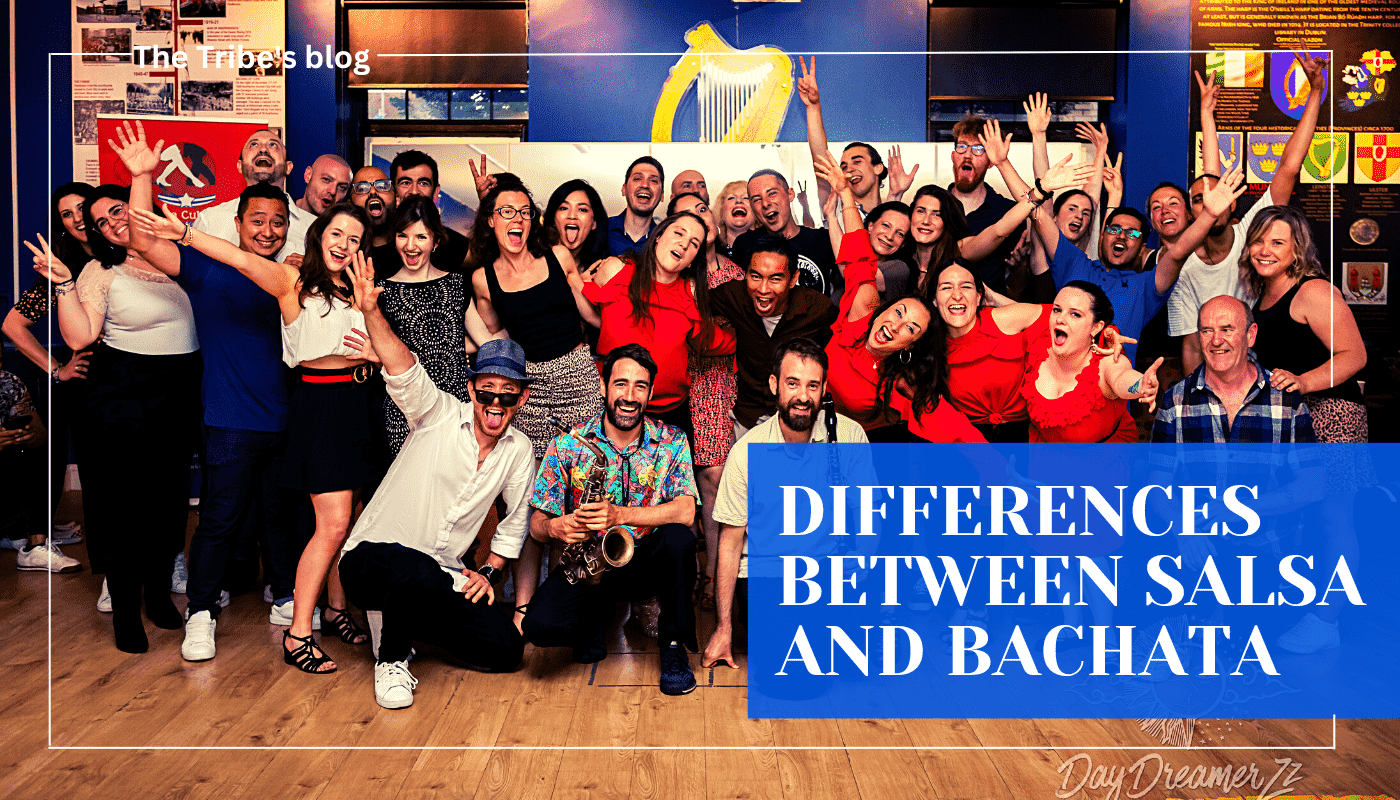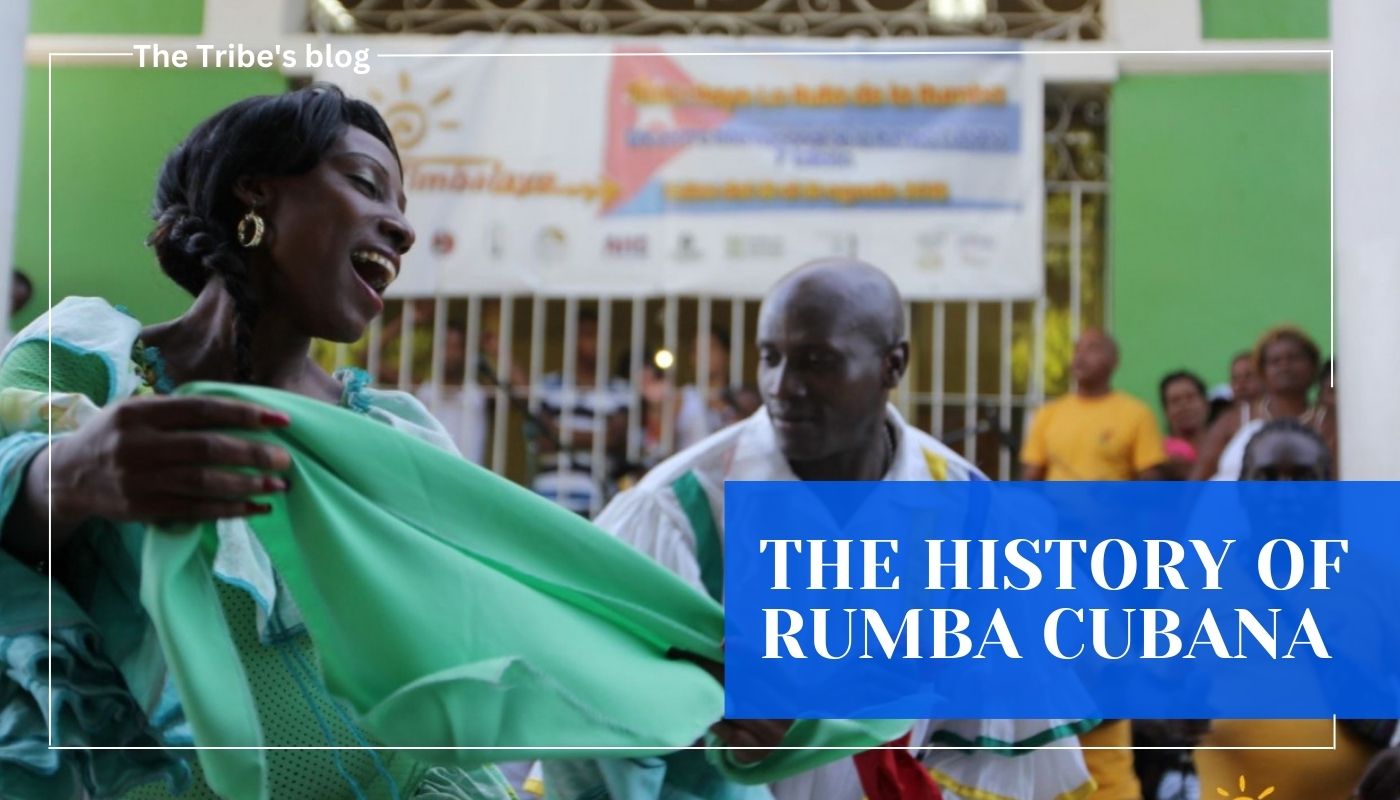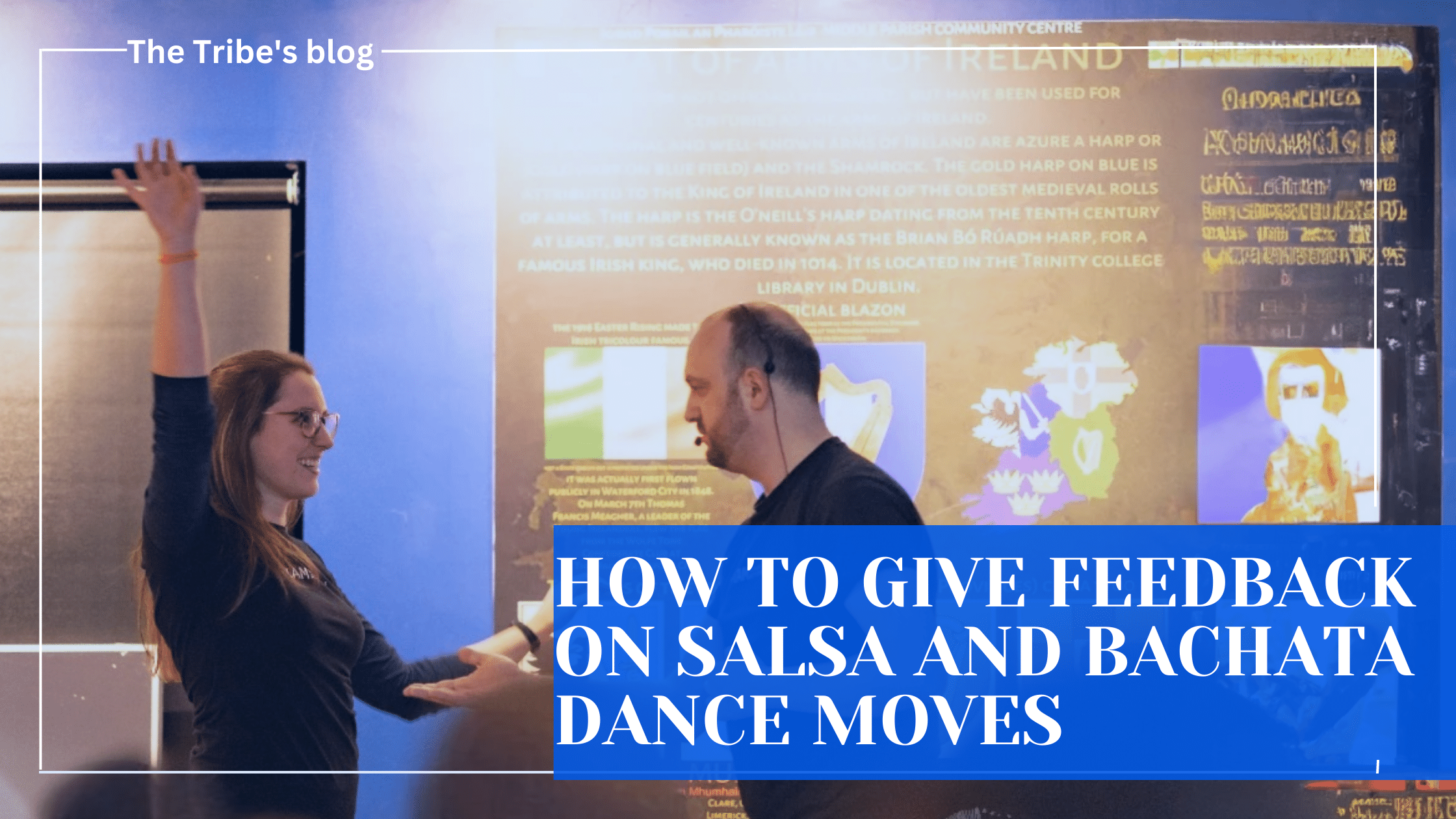Here at The Tribe we offer courses in both Salsa and Bachata. Both styles are extremely popular.
You will find salsa and bachata danced in most cities across the world. But what is the difference between these two wonderful dance styles? Read on to find out!
Before we get right into it, let’s establish the very basics. In the world of dancing what is Salsa? What is Bachata?
Salsa is a quick, energetic partner dance with lots of turns and lots fun.
It is a Latin dance that combines Cuban, Dominican and Puerto Rican dances.
In salsa dancing, a dancer shifts their weight forwards and backwards, drawing attention to the hips. The main movements are in eight steps with a pause on the 4th and 8th beats.
The arms are used by the “leader” to indicate to the “follower” which direction she should go. It can be danced in either an open or closed position.
There are many different styles of salsa dance such as Cuban, LA, New York and Columbian.
Bachata is also a partner dance but it has different music and totally different style.
Bachata developed out of the dance styles of bolero and merengue and originated in the Dominican Republic.
Bachata is danced with 4-step timing. Dancers move on 1,2,3 and tap on the 4th beat.
Bachata dancing can be performed in either an open or closed position. Performance depends significantly on the music being played, mood, atmosphere, and interpretation.
Like salsa, there are many different styles of bachata which include Dominican Bachata (the original), modern bachata and bachata sensual.
There are four main differences between salsa and bachata. Read on to find out!
1) Music
It’s important to remember that salsa and bachata are music genres as well as dance forms. The dances developed in response to the style of music.
To the ear, salsa music differs greatly from bachata music.
First off, salsa music typically has a high tempo (usually in the 160-220 bpm range). Bachata, especially bachata sensual, is quite a lot slower (typically in the 108 and 152 bpm range).
The rhythms found in salsa are completely different from those of bachata. Two central beats distinguish salsa from bachata: the clave and tumbao.
Finally, the instruments used in salsa are often different from those used in bachata.
2) Basic Step
The structure of the basic steps in salsa and bachata are different. In salsa, dancers move in a forward and backward motion. In bachata, the step is lateral.
Salsa is most often danced on the beats of 1, 2, 3 and 5, 6, and 7 with pauses on the 4 and 8. In bachata, dancers move sideways, using all 8 counts of the music and placing a distinctive tap on the 4 and the 8.
3) Energy
An obvious thing one might notice when drawing a difference between salsa and bachata is their energy or their vibe. It wouldn’t take an expert to see these two dances offer quite a different mood.
Salsa, as already mentioned, is quick, playful and energetic. Bachata is most commonly slower, sensual and more intense. Dominican bachata, the original bachata is the exception here as it can also be quick and playful.
4) Positioning and Body Movement
To observe, salsa and bachata don’t appear alike in terms of style, positioning and body movement.
Salsa dancers tend to have a little more distance between them. While there is fun and energy between partners, the positioning is less intimate than in bachata.
Bachata dancers often hold each other in quite a close embrace.
Additionally, movements in salsa are sharp with intricate arm patterns and fast spins. Shoulder movements and shimmies are often seen.
Bachata incorporates some similar qualities but is often executed in a slower, more dramatic fashion with body waves, dips and rolls being incorporated.
So there you have it, merely some of the major differences between salsa and bachata. Now to ask, which one of these incredible dance styles is for you? Why not both?
Check out our weekly schedule to see how you can get involved!






